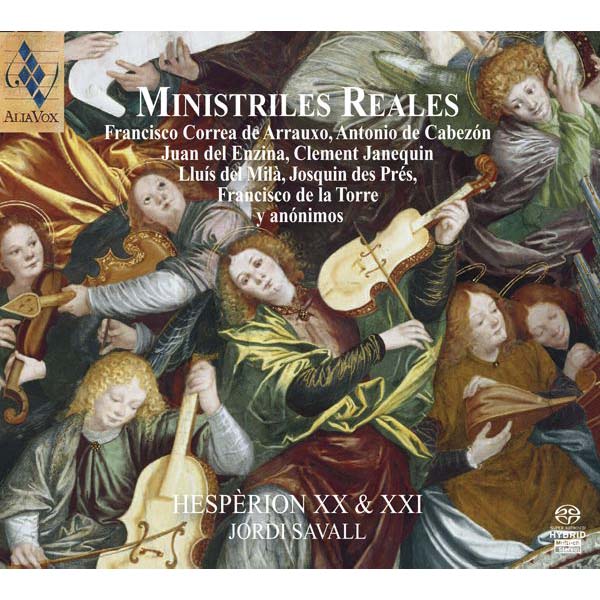MINISTRILES REALES
Musica Instrumental del Siglo de Oro 1450-1690
Hespèrion XXI, Jordi Savall
19,99€
Reference: AVSA9864
- Jordi Savall
- Hespèrion XX-XXI
One of the most interesting new developments on the 15th and 16th century musical scene was the affirmation and development of instrumental music as an independent language, with the flourishing of new forms of musical expression based on vocal forms or improvisation and dance. Just as in 15th-16th century Italy, vocal song inspired the development of Canzoni da sonare and Madrigali passeggiati, from the middle of the 15th century, during the heyday of Alfonso V the Magnanimous’s newly installed court in Naples, the courts that had close contacts with Italian culture, such as those of Flanders and Catalonia-Aragon, saw the emergence a new and increasingly specific repertory which, during the Golden Age of the 15th and 16th centuries, was to become popular and spread throughout the Iberian peninsula and, particularly at the courts of Castile, Aragon, Catalonia and Valencia, as well as those countries where the latter maintained a political presence, such as Flanders, Naples and Sicily. At the same time, it is no mere coincidence that the first paintings and frescoes depicting early versions of the viola da gamba, one of the first typically Renaissance instruments, are to be found in various forms in the region of Valencia and Gandía, two cities which had close ties with Italian culture.
Our professional involvement with this repertory goes back to our early discoveries and experiences (1966-67) with the Barcelona-based ensemble ARS MUSICÆ (with Enric Gispert), followed by our studies, research and experimentation at the SCHOLA CANTORUM BASILIENSIS (1968-70), and later (in 1974) with the creation of HESPÈRION XX (with Montserrat Figueras, Hopkinson Smith and Lorenzo Alpert). During more than 40 years researching and reviving the musical legacy of the Hesperides (the name that the ancient Greeks gave to the Iberian and Italic peninsulas) in the company of our fellow musicians in HESPÈRION XX and, since 2001, HESPÈRION XXI, we have been able to trace the key significance and importance of the instrumental legacy of the ministriles, dating back to the mid-15th century, through works such as the different versions of the Hautes Danses (performed on wind instruments, with their predominantly brilliant, high-pitched sound) and the Basses danses (typically rendered by viol ensembles, with their deeper, more serious sound) which developed as improvisational counterpoint on the basis of Gregorian chant (“In exitu Israel”) or more popular melodies transformed into “cantus firmus”, such as “la Spagna”, “la Romanesca”, “Las Vacas”, the “Passamezzo” and “Mappa mundi”, not forgetting the fanfares peculiar to each individual court and city (“Dit le bourguynon”, “Vive le Roy”, “Propiñan de Melyor”, “Chiave, chiave”) and the popular dances (“Collinetto”, “La Perra mora”, “La Folia”), as well as those of courtly origin (Pavanes, Galliards, Saltarellos, etc.) to which the fantasias, tientos, batallas, diferencias and glosados were added from the middle of the 16th century.
+ information in the CD booklet
JORDI SAVALL
Paris/Seoul, December, 2008
Translated by Jacqueline Minett







Share